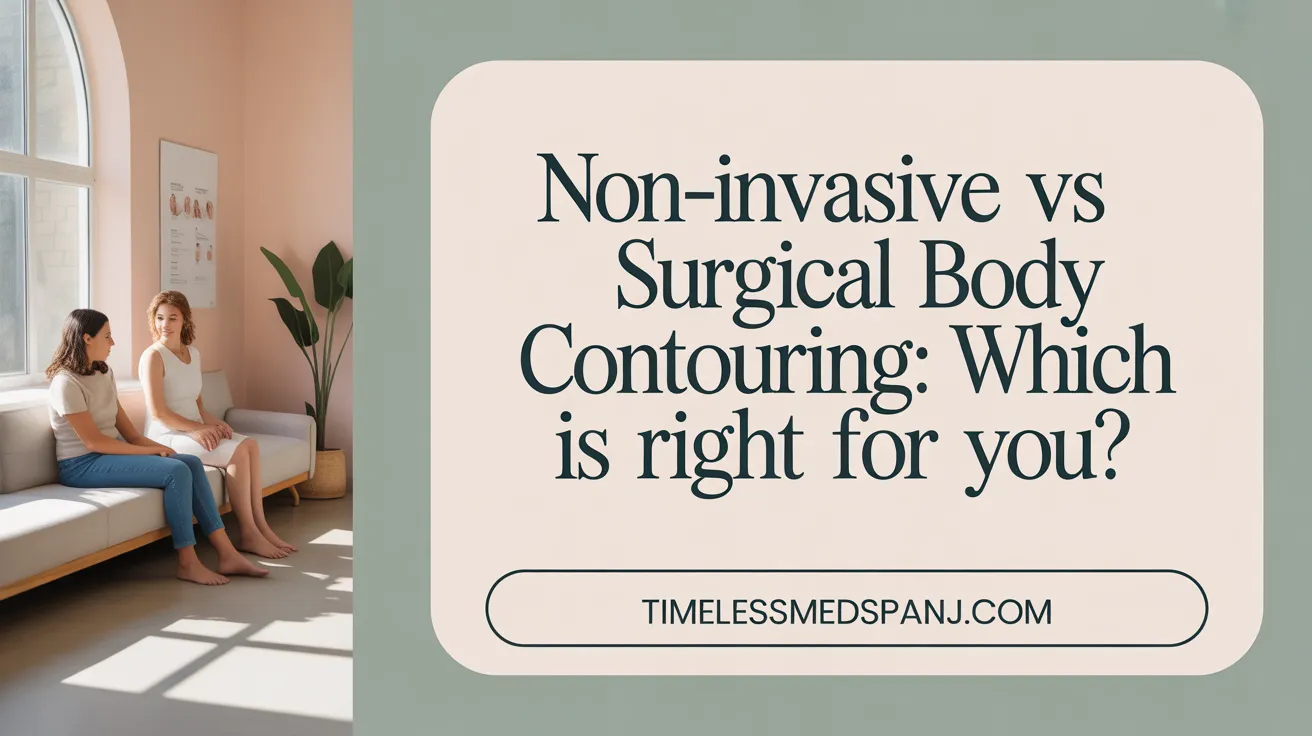Exploring Innovations in Skin and Body Aesthetics
In the evolving world of cosmetic medicine, skin rejuvenation, cosmetic enhancements, and body contouring have become increasingly sophisticated, offering a range of options tailored to individual needs. This guide delves into the various procedures, their benefits, risks, and the technological advancements shaping patient outcomes today.
Understanding Skin Rejuvenation: Techniques and Technologies

What are the common methods and technologies used in skin rejuvenation procedures?
Skin rejuvenation employs a broad array of techniques designed to improve skin appearance, reduce signs of aging, and target various skin imperfections. Among the most popular methods are laser therapies, chemical peels, microneedling, and light-based treatments.
Laser therapies include both ablative and non-ablative options that help reduce wrinkles, scars, and pigmentation. Fractional lasers deliver targeted energy to stimulate collagen growth while minimizing downtime, whereas picosecond lasers focus on pigment removal and skin tightening.
Chemical peels, classified by depth, range from light peels that improve surface irregularities to deep peels addressing deeper wrinkles and sun damage. Microdermabrasion and dermabrasion exfoliate superficial skin layers to promote smoother skin.
Microneedling, often combined with radiofrequency (RF), such as Morpheus8, induces controlled skin injury to stimulate collagen. This technique improves skin texture and elasticity, reducing fine lines.
Injectables like Botox work by relaxing facial muscles to diminish dynamic wrinkles, particularly on the forehead and around the eyes. Dermal fillers, mostly hyaluronic acid-based, restore lost volume, fill in lines, and improve skin firmness.
Emerging technologies continue to enhance outcomes. Morpheus8, for instance, combines microneedling with RF energy for a deeper remodel of skin layers, effective for tightening and contouring. Fractional lasers use tiny beams to target specific skin sections, promoting collagen with minimal recovery time.
Overall, these minimally invasive procedures are performed under professional guidance to stimulate collagen production and rejuvenate skin from within, resulting in a more youthful, healthy appearance.
Comprehensive Cosmetic Enhancements for Face and Body

What options are available for cosmetic enhancement of the face and body?
Patients seeking cosmetic improvements have a broad array of choices, spanning from non-invasive techniques to more invasive surgical procedures. For facial rejuvenation, options include treatments such as Botox and dermal fillers to smooth wrinkles and restore volume, as well as laser therapy, chemical peels, and microdermabrasion for skin resurfacing and texture improvement.
Surgical facial procedures like facelifts, eyelid surgery (blepharoplasty), and brow lifts address sagging skin, deep wrinkles, and aging signs effectively and provide more permanent results. Body enhancements include breast augmentation or reduction, liposuction to target stubborn fat, and tummy tucks (abdominoplasty) to remove excess skin and tighten abdominal muscles.
Minimally invasive procedures, such as thread lifts and laser skin resurfacing, offer rejuvenation benefits with reduced recovery times. Non-surgical fat reduction, skin tightening, and body contouring techniques—like cryolipolysis (CoolSculpting®), laser lipolysis, and radiofrequency treatments—are also popular.
Choosing the appropriate procedure involves comprehensive consultation with a board-certified plastic surgeon. They assess individual goals, medical history, skin and tissue condition, and recommend a personalized treatment plan to achieve natural-looking, satisfying results.
Exploring Body Contouring: Non-Invasive and Surgical Approaches

What are the non-invasive and surgical body contouring treatments and how do they differ?
Body contouring includes various methods aimed at reshaping the body by reducing fat and tightening skin. These range from non-invasive treatments like cryolipolysis (CoolSculpting®), radiofrequency lipolysis (truSculpt®), laser lipolysis (Zerona®), and ultrasound-based procedures. These technologies use energy such as cold, heat, or light to target fat cells without incisions. Patients often undergo multiple sessions, and results develop gradually over weeks or months. For example, cryolipolysis freezes fat cells, which are then naturally eliminated, leading to a 20-25% fat reduction.
In contrast, surgical techniques include liposuction, tummy tucks, and body lifts. These procedures involve incisions to physically remove excess fat or skin. Results from surgery are typically immediate and more noticeable, often seen right after recovery from anesthesia. Surgical options are more invasive, requiring longer downtime, but they can dramatically improve body contours in a single session.
The main differences lie in their invasiveness, recovery time, and outcome visibility. Non-invasive methods offer safer profiles with minimal recovery, ideal for subtle contouring or those unable to undergo surgery. Surgical procedures, while more invasive with longer recovery, tend to provide more significant and permanent sculpting results.
Suitability based on skin elasticity and fat distribution
Candidates for body contouring should have good skin elasticity to ensure tight results, especially after fat removal. Those with localized fat deposits resistant to diet and exercise can benefit from non-invasive procedures. Conversely, individuals with excess sagging skin, often following major weight loss or pregnancy, may require surgical lifts or tummy tucks.
Role after weight loss and pregnancy for skin removal and reshaping
Body contouring plays a vital role for those who have lost significant weight or undergone pregnancy. Procedures like tummy tucks and body lifts remove sagging skin and improve shape. These surgeries are tailored to remove excess tissue, enhance contours, and restore body support. Non-invasive treatments may be used adjunctively to refine results or tighten remaining loose skin, but they are less effective for severe sagging.
Both approaches aim to achieve a more proportionate and youthful appearance, boosting confidence and comfort. Consulting a qualified specialist helps determine the most suitable strategy based on individual skin quality, fat distribution, and personal goals.
Patient Expectations: Outcomes and Suitability for Aesthetic Procedures

What outcomes can patients typically expect from skin rejuvenation and body contouring treatments?
Patients seeking skin rejuvenation and body contouring can usually expect noticeable improvements in their appearance. Skin treatments like laser resurfacing, chemical peels, and dermal fillers often result in smoother skin, reduced wrinkles, and a more youthful look over several weeks. Body contouring procedures—both surgical, such as tummy tucks and liposuction, and non-invasive options like cryolipolysis—aim to reshape and slim targeted areas. Surgical treatments tend to provide immediate, dramatic results, with fat removal and skin tightening evident right after surgery. Non-surgical methods usually show gradual results, with optimal outcomes emerging in a few months. Overall, patients often experience a more defined body or face, improved skin texture, and boosted confidence, especially when they adhere to post-procedure care and maintain a stable weight. However, the longevity of results depends on individual factors like age, skin elasticity, and lifestyle.
Who is considered a good candidate for various aesthetic procedures?
Ideal candidates are healthy adults who are close to their ideal body weight and have realistic expectations about what procedures can achieve. They should have stable weight, good skin elasticity, and areas of stubborn fat or skin laxity resistant to diet and exercise. Candidates also need to be committed to following pre- and post-procedure guidelines, such as avoiding smoking and sun exposure, which can impair healing. Mental and emotional readiness are crucial, as procedures should be chosen based on carefully discussed goals with a qualified surgeon. Individuals with uncontrolled medical conditions, poor skin quality, or unrealistic expectations may not be suitable candidates. In such cases, consultation with a board-certified specialist helps align their goals with appropriate treatments, leading to more satisfactory results.
Why are realistic expectations and thorough consultations important?
Setting realistic goals is vital to achieving satisfaction from aesthetic procedures. During consultation, practitioners evaluate skin condition, facial or body anatomy, medical history, and personal goals. Clear communication helps establish what results are achievable and emphasizes the importance of safety and proper recovery. Unrealistic expectations can lead to disappointment, even if the procedure is technically successful.
How do long-term maintenance and lifestyle impact results?
Results from aesthetic treatments can diminish over time if lifestyle factors such as aging, weight fluctuation, sun exposure, and smoking are not managed. Maintaining results often requires ongoing skincare, sun protection, a healthy diet, and regular exercise. Patients are encouraged to adopt a healthy lifestyle to prolong their improvements. Some procedures, like fillers and skin resurfacing, may require periodic touch-ups to sustain their effects. Ultimately, understanding these factors helps patients plan for the longevity of their results and make informed choices about continuing aesthetic care.
Benefits versus Risks: What to Know Before Cosmetic Procedures

What are the benefits and risks associated with various cosmetic procedures?
Cosmetic procedures can significantly enhance appearance and boost self-confidence. They help reshape body parts, reduce signs of aging, and improve skin texture, often leading to a more youthful, natural look. Many patients experience improved body image and may benefit from both aesthetic and functional gains.
Surgical options like tummy tucks, liposuction, or body lifts provide immediate, noticeable results, often transforming body contours in a single session. Non-surgical treatments such as cryolipolysis (CoolSculpting®), laser lipolysis (Zerona®), and injectables like dermal fillers deliver more subtle changes, with results appearing gradually over weeks.
However, every procedure carries potential risks. Surgical procedures involve general anesthesia, longer recovery periods, and risks of bleeding, infection, nerve injury, scarring, or adverse reactions to anesthesia. Postoperative complications may include swelling, pain, asymmetry, or delayed wound healing.
Non-surgical options generally pose fewer risks, with side effects usually limited to temporary skin redness, swelling, or discomfort. Rare adverse events include skin discoloration, nodules, or paradoxical fat growth.
It is crucial for individuals considering cosmetic treatments to have honest discussions with qualified practitioners. Understanding the potential complications, recovery timelines, and realistic outcomes helps ensure satisfaction and safety.
Most patients find that the benefits — such as more defined body parts, a more youthful appearance, and improved self-esteem — outweigh the risks when procedures are performed by credentialed professionals following established safety guidelines. Thorough pre-procedure consultations are vital to assess health status, set realistic expectations, and minimize complications.
Having accurate information about both potential benefits and risks supports informed decision-making and encourages realistic goals in cosmetic enhancement.
Technological Innovations Driving the Future of Aesthetic Care
What are the latest advancements and technologies in aesthetic treatments?
The field of aesthetic care continues to evolve rapidly, integrating cutting-edge technologies to enhance safety, effectiveness, and patient comfort. Recent developments include advanced laser systems such as fractional CO2 and Erbium lasers, which allow for precise skin resurfacing and scar remodeling with minimal downtime. These lasers penetrate the skin at specific depths, stimulating collagen production and improving skin texture.
Non-invasive energy devices like radiofrequency (RF), high-intensity focused ultrasound (HIFU), and ultrasound technology are increasingly popular for skin tightening and fat reduction. RF technology heats the deeper layers of the skin, promoting collagen synthesis, while HIFU targets surgical-level tightening without incisions. Ultrasound devices use sound waves to break down fat cells and stimulate skin laxity.
Injectable treatments are also advancing. Longer-lasting hyaluronic acid fillers are now available, providing more durable results for volume restoration. Biostimulatory agents like Sculptra stimulate the body’s collagen production, offering a natural-looking, gradual improvement. New formulations of dermal fillers prioritize safety and natural results, minimizing the risk of adverse reactions.
Neuromodulators such as Botox are increasingly used in early intervention strategies. These help prevent the formation of static wrinkles and contribute to a youthful appearance.
Regenerative medicine techniques have gained prominence as well. Platelet-rich plasma (PRP), platelet-rich fibrin, and autologous fat grafting are being used to promote skin rejuvenation, enhance healing, and restore facial volume naturally.
The integration of artificial intelligence (AI), advanced imaging, and precise treatment planning is transforming personalized aesthetic care. AI algorithms can analyze skin conditions, predict outcomes, and assist practitioners in customizing treatments, resulting in higher satisfaction. Additionally, innovative delivery methods, like mobile clinics, make aesthetic procedures more accessible and convenient.
Overall, these technological and scientific innovations are shaping the future of aesthetic treatments in 2024, providing safer, more effective, and minimally invasive options that meet the rising demand for natural-looking and long-lasting results.
Safety, Regulation, and Evidence: Ensuring Informed Choices in Aesthetic Procedures
The regulation and safety oversight of aesthetic treatments primarily involve the U.S. Food and Drug Administration (FDA), which assesses the safety and efficacy of various devices used in body contouring. Devices like cryolipolysis (CoolSculpting®), laser lipolysis (SculpSure®), and radiofrequency-based treatments undergo rigorous approval processes such as pre-market approval (PMA) or 510(k) clearance. These processes confirm that the devices meet specific safety standards before reaching the market.
While FDA approval is required for certain medical devices and injectable treatments like Botox® and Juvederm®, many cosmetic products and ingredients do not require prior approval, apart from certain color additives. However, the FDA actively monitors the safety of these procedures through post-market surveillance, adverse event reporting, inspections, and enforcement actions. Practitioners and consumers can verify that the devices used are FDA-approved or FDA-cleared by consulting the official FDA database, ensuring treatments adhere to the required safety standards.
Regarding the effectiveness of body sculpting devices, clinical evidence supports the use of several technologies. For instance, cryolipolysis (CoolSculpting) effectively reduces fat in targeted areas by up to 25% per session, with results visible within weeks. Laser lipolysis (like SculpSure) and other light-based therapies are also FDA-approved, demonstrating moderate fat reduction and skin tightening benefits supported by scientific data.
While surgical options such as liposuction or tummy tuck provide immediate and more dramatic results, nonsurgical treatments offer a safer profile with shorter recovery times. It remains crucial for patients to consult qualified healthcare providers—preferably board-certified plastic surgeons—to ensure appropriate device use and to set realistic expectations for outcomes.
Making Informed Choices in Aesthetic Enhancements
With a vast array of options for skin rejuvenation, cosmetic enhancements, and body contouring treatments, patients today can tailor procedures to their unique desires and health profiles. Understanding the differences between non-invasive and surgical approaches, recognizing the benefits and potential risks, and leveraging the advances in technology empower individuals to achieve natural, satisfying results safely. Consulting with qualified, board-certified professionals ensures the selection of appropriate, evidence-based treatments aligned with realistic expectations and long-term wellness. As the field continues to innovate, informed decision-making remains key to enhancing confidence and quality of life through these transformative aesthetic interventions.
References
- Body Contouring: What Is It, Benefits, Risks & Recovery
- Body Contouring - American Society of Plastic Surgeons
- Body Contouring - ABCS - American Board of Cosmetic Surgery
- Skin Rejuvenation and Resurfacing
- How Facial Rejuvenation Procedures Can Improve Aging Skin
- Non-Invasive Body Contouring Technologies - FDA
- Body Contouring Houston: Advanced Alternatives & Innovation
- Does Body Contouring Really Work? - Anne Arundel Dermatology
